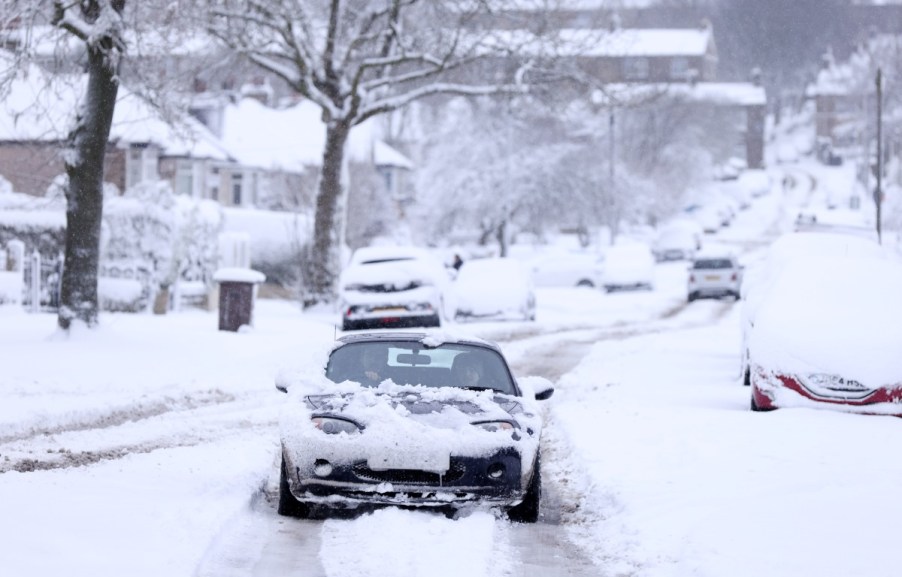
How a Warmer, Wetter Winter in 2023 Will Present Unique Driving Challenges
With fall well underway in most of the country, it’s time to look ahead for what winter has in store. The winter of 2023 is shaping up to be both warmer and wetter than normal. And that will have an effect on our cars and how we travel compared to previous years.
Warm winter weather means heavy, wet snow

With higher winter temperatures comes more moisture. That means heavy, wet snow as opposed to the lighter, fluffier snow that comes from colder temperatures. And that added weight makes a difference when you drive.
It’s easy for even a lightweight car to punch through the lighter, drier snow of a cold winter. But those big, heavy flakes will grab at your tires instead. That can make for a challenging drive, as the heavier snow presents a combination of problems.
The slushy conditions feel almost like hydroplaning, where the car will go in whatever direction it wants regardless of your inputs. Simultaneously, the reduced grip means that getting things back under control is even more challenging than before.
We’re in for more slippery roads in the winter of 2023

Fresh, dry snow certainly presents its own challenges. For instance, it is easier to blow around, creating snow drifts that can pop up out of nowhere. But the heavy, wet snow we’re expecting this winter is more slippery from the get-go. That means even a light layer of snow will make for slippery winter roads in 2023.
That’s because the dry snow contains less water, making it harder to turn into ice when compacted. Wet snow, meanwhile, forms a slippery layer almost instantly, as the added moisture becomes ice more quickly. That prevents it from providing any grip, as the flakes quickly form into a thin layer of ice on the ground below. In turn, you have a snow-over-ice driving situation, even with just a light flurry.
Studded snow tires will be more important for winter in 2023
Regular snow tires do well with the dry snow we’ve had for the past few winters. In 2023, however, studded snow tires will be more important. The studs punch through that wet snow and provide more grip, even on icy surfaces. And where regular snow tires have a hard time with the wet ice of a warmer winter, studded snows offer a bit of extra confidence.
Will it be safe to drive this winter?
Compared to previous years, driving in the winter of 2023 will likely be a bit more sketchy than in years past. The increased moisture and increased temperature mean more changeable conditions. So it won’t be uncommon to see a transition from snow to rain and back, all within the same journey.
That means more freezing rain, more black ice, and wet, slippery snow conditions. None of those are conducive to safe driving, even with studded snow tires. If you have to drive this winter, plan ahead, leave early, and pay close attention to road conditions and temperature as you drive.




